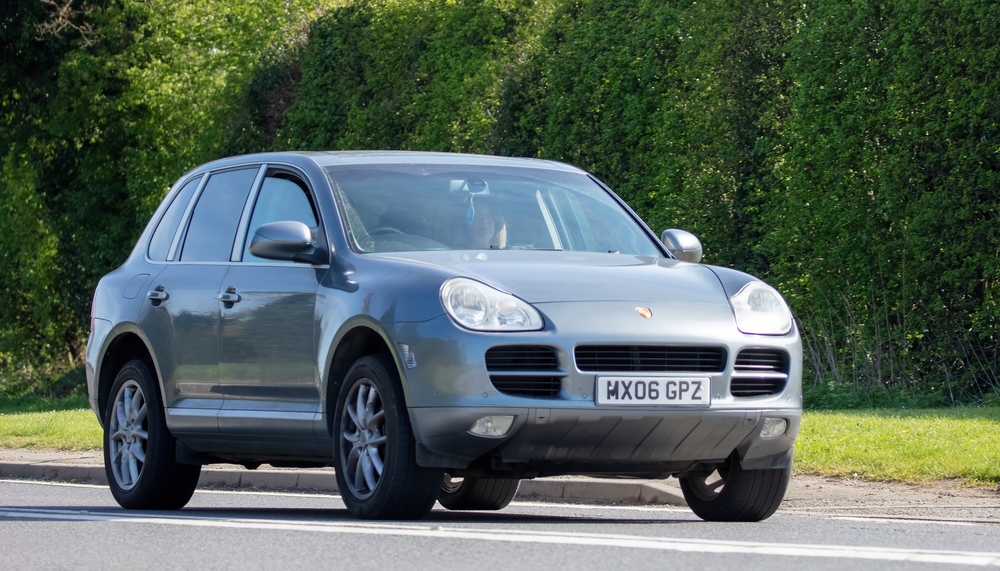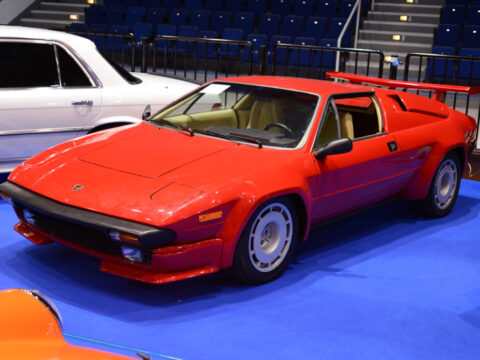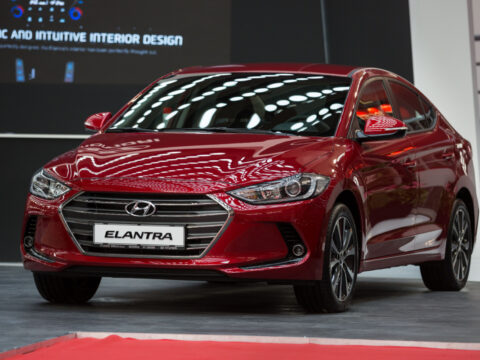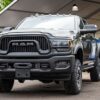When we think of classic cars, many of us picture sleek designs, powerful engines, and the open road. But along with all that charm and muscle came a major downside—terrible gas mileage. Some of these retro vehicles were notorious for guzzling fuel, making them impractical by today’s standards. Here’s a look at 20 retro cars that stood out for their shockingly bad fuel efficiency.
Contents
Hummer H1 (1992–2006)

Originally designed for military use, the Hummer H1 was built for rugged terrain, not fuel efficiency. Its massive 6.5L turbodiesel V8 engine consumed fuel at a staggering rate, averaging around 10 miles per gallon (MPG). Weighing over 7,000 pounds, the H1’s hefty frame and wide stance added to its inefficiency. Though it excelled off-road, the Hummer H1 quickly became notorious for its poor gas mileage in civilian use.
Cadillac Eldorado (1971–1978)

The Cadillac Eldorado of the 1970s featured a massive 8.2L V8 engine, which was the largest V8 produced at the time. With such an engine, it was hardly a surprise that this luxury car could only achieve around 8-12 MPG. The Eldorado’s weight and large dimensions further contributed to its poor fuel economy. During the fuel crisis of the 1970s, the Eldorado’s excessive consumption made it increasingly impractical for everyday drivers.
Ford Bronco (1966–1977)

Known for its off-road capability and rugged design, the first-generation Ford Bronco wasn’t built with fuel efficiency in mind. Equipped with V8 engines, it typically returned around 10-12 MPG. Its boxy, heavy frame, designed to withstand rough terrain, caused significant aerodynamic drag, worsening its fuel consumption. Though it remains an iconic off-roader, the Bronco was a clear gas guzzler for its time.
Dodge Charger Daytona (1969)

The Dodge Charger Daytona was a car built for one thing—speed. With a powerful 7.0L Hemi V8 engine, it was a dominant force on the racetrack, but its fuel economy was abysmal, averaging just 10-13 MPG. Designed with a focus on performance and aerodynamics, fuel efficiency wasn’t a priority. This car’s massive power came at the cost of draining gas at an alarming rate, but it became a legend in the world of muscle cars.
Lincoln Continental Mark IV (1972–1976)

The Lincoln Continental Mark IV was a symbol of opulence in the 1970s, but its fuel efficiency was anything but luxurious. Powered by a gargantuan 7.5L V8 engine, the car only managed around 9-12 MPG. Its substantial weight, plush interiors, and wide stance were designed for comfort, not for conserving fuel. The Mark IV was a favorite among those who wanted to cruise in style, but the cost of filling the tank was considerable.
Chevrolet Camaro Z28 (1970)

The Chevrolet Camaro Z28 of 1970 was designed to dominate the muscle car scene, boasting a high-performance V8 engine that prioritized speed over fuel economy. With its powerful engine, the Z28 could only muster around 10-12 MPG. Its aggressive design and performance focus meant that fuel efficiency was sacrificed in the pursuit of power. This trade-off was typical for muscle cars of the era, but for daily driving, it was far from efficient.
Pontiac Firebird Trans Am (1977)

Made famous by Smokey and the Bandit, the 1977 Pontiac Firebird Trans Am was as much about attitude as performance. Under the hood, a 6.6L V8 engine guzzled gas at a rate of around 10-13 MPG. Built for high-speed thrills rather than practicality, its muscular build and large engine contributed to its poor fuel economy. The Firebird Trans Am remains an icon of the late-70s muscle car era, despite its less-than-ideal gas mileage.
Plymouth Road Runner (1968–1974)

The Plymouth Road Runner was all about raw power on a budget, but it came with the downside of terrible fuel economy. With engine options like the 7.2L V8, the Road Runner averaged around 10-12 MPG. The car’s no-frills design focused entirely on speed and acceleration, ignoring any concern for fuel efficiency. It was a thrilling muscle car for its time, though expensive to operate when gas prices soared.
Jeep Wagoneer (1963–1991)

The Jeep Wagoneer was one of the first luxury SUVs, combining rugged off-road ability with comfort. However, it was powered by various large V8 engines, and its heavy frame resulted in a paltry 10-14 MPG. The weight and size of the Wagoneer, while perfect for off-road trips and towing, led to significant fuel consumption. As SUVs gained popularity, the Wagoneer stood out, but it was far from fuel-efficient.
Ford Thunderbird (1964–1966)

The mid-1960s Ford Thunderbird was all about luxury and power, and that combination came with poor fuel efficiency. With engines as large as 7.0L, the Thunderbird averaged around 10-13 MPG. Its weight and emphasis on comfort made it a heavy vehicle, further contributing to its poor gas mileage. Stylish and commanding, the Thunderbird made a statement on the road, but its high fuel consumption was part of that statement.
Oldsmobile Toronado (1966–1970)

The Oldsmobile Toronado was an innovative car for its time, being one of the first front-wheel-drive American vehicles, but its large 7.0L V8 engine delivered poor gas mileage. Averaging around 10-12 MPG, it reflected the era’s love for big, powerful engines without regard for efficiency. Despite its unique design and engineering, the Toronado’s fuel economy was disappointing. It remains a landmark in automotive history, though not for its efficiency.
Buick Riviera (1971–1973)

The Buick Riviera of the early 1970s was a car built for cruising in style, but that came with a price at the pump. Its 7.5L V8 engine achieved just 10-12 MPG, a common issue for luxury vehicles of this era. The Riviera was designed to be sleek and fast, with little concern for fuel efficiency. While it was a statement of luxury, the cost of fueling this vehicle added up quickly for its owners.
AMC Javelin (1968–1974)

The AMC Javelin, designed to compete with the likes of the Camaro and Mustang, was another muscle car that prioritized performance over efficiency. With V8 engine options, including a 6.6L, it achieved fuel economy in the range of 10-13 MPG. The Javelin’s relatively heavy body and performance-driven design meant it guzzled fuel like many of its competitors. Despite its striking appearance, it wasn’t built for those looking to conserve fuel.
Dodge Challenger R/T (1970)

The Dodge Challenger R/T, equipped with a monstrous 7.2L Hemi V8 engine, was built for speed but guzzled gas at an alarming rate, averaging around 8-12 MPG. Like many muscle cars of its era, it was designed for performance, with fuel efficiency taking a backseat. The Challenger’s iconic styling and power made it a standout, but its fuel consumption was a major drawback for anyone using it as a daily driver.
Chrysler Imperial LeBaron (1974)

The Chrysler Imperial LeBaron of 1974 was a luxury sedan that packed a 7.2L V8 under the hood, resulting in a fuel economy of around 8-12 MPG. This large and heavy car was designed for comfort and power, but fuel efficiency wasn’t a priority. As the energy crisis of the 1970s took hold, cars like the Imperial LeBaron became symbols of excess in an era that was quickly shifting toward smaller, more economical vehicles.
Plymouth Fury (1970)

The Plymouth Fury of 1970, known for its powerful V8 engines, was another large car that struggled with gas mileage. With engine options that included a 7.2L V8, the Fury averaged around 10-12 MPG. The car’s performance-oriented design and substantial size made it a fuel guzzler. While the Fury was a classic example of American muscle, it was anything but efficient when it came to fuel consumption.
This article originally appeared in MyCarMakesNoise.
More from MyCarMakesNoise
20 Affordable Used Cars That Are Known to Last

Looking for a reliable car that won’t break the bank? Buying a used vehicle can be a smart choice, especially when you choose models known for their longevity. Read More.
8 Classic Boats That Sailed into Obscurity

Over the years, many classic boats that once ruled the waters have quietly disappeared from the spotlight. These vessels, known for their craftsmanship, speed, or unique designs, have become rare finds, often overshadowed by modern innovations. Read More.
15 Luxurious SUVs That Deliver on Comfort and Class

In the realm of automotive excellence, luxury SUVs stand as the epitome of comfort and sophistication. These vehicles seamlessly blend high-performance capabilities with opulent interiors, creating an unmatched driving experience. Read More.














